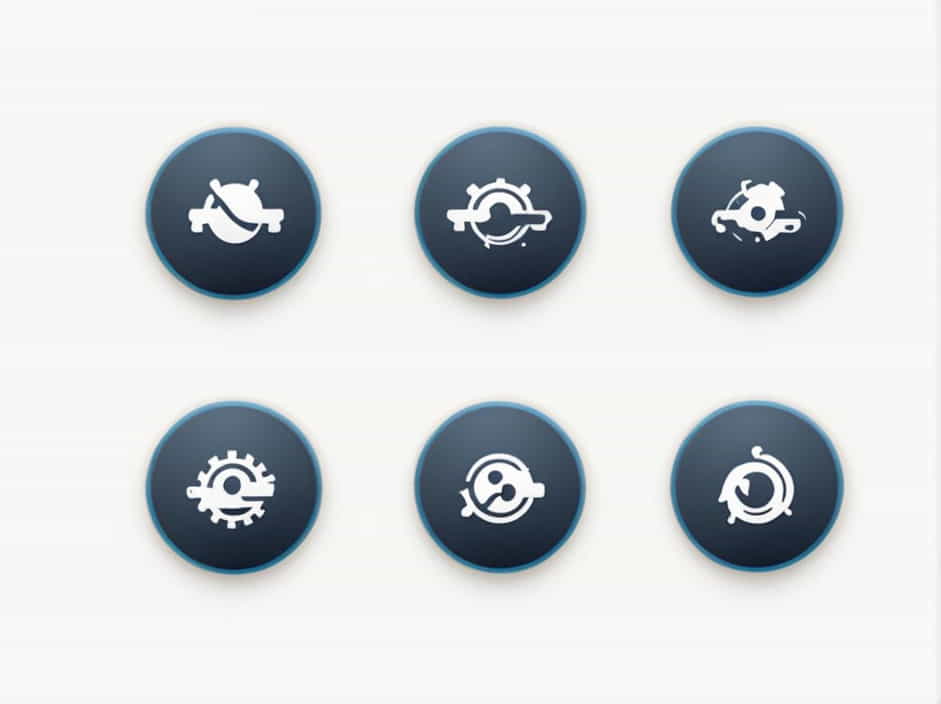Orbital motion refers to the movement of objects around a central body due to gravitational forces. In an ideal scenario, orbits follow predictable paths based on classical mechanics. However, in strongly perturbed environments, additional forces can significantly alter these paths, making orbital motion complex and unpredictable.
Understanding how orbits behave under strong perturbations is crucial for space exploration, satellite deployment, and celestial mechanics. Factors such as gravitational interactions, atmospheric drag, and relativistic effects can all contribute to these perturbations.
What Are Strongly Perturbed Environments?
A strongly perturbed environment is one where external forces significantly affect the trajectory of an orbiting body. These perturbations can arise due to:
-
Gravitational influences from multiple bodies – Interactions with nearby planets, moons, or stars.
-
Non-gravitational forces – Solar radiation pressure, atmospheric drag, and magnetic fields.
-
General relativity effects – Frame-dragging and time dilation near massive bodies.
-
Chaotic dynamics – Unpredictable changes in motion due to nonlinear gravitational interactions.
In such environments, standard orbital equations become insufficient, requiring more complex models to predict motion accurately.
Types of Orbital Perturbations
1. Gravitational Perturbations
Gravitational forces from additional celestial bodies can cause deviations in an object’s orbit. These include:
-
Lunar and solar perturbations – The Moon and the Sun influence Earth’s satellites, altering their orbits over time.
-
Planetary perturbations – In multi-planetary systems, gravitational interactions can lead to orbital resonances.
-
Tidal forces – The stretching effects due to gravity can gradually shift orbital parameters.
2. Atmospheric Drag
For low-Earth orbit (LEO) satellites, atmospheric resistance is a significant perturbation. As objects move through Earth’s upper atmosphere, they experience drag that slows them down, leading to:
-
A decrease in altitude over time.
-
Orbital decay, eventually causing re-entry.
-
Variations in drag due to solar activity and atmospheric density changes.
3. Radiation Pressure and Solar Wind
Light from the Sun exerts pressure on objects, causing gradual shifts in their trajectories. This effect is more pronounced for:
-
Small spacecraft with large surface areas (e.g., solar sails).
-
Dust ptopics and space debris.
-
Comets, where radiation influences their tails and motion.
4. General Relativity Effects
Near massive objects like black holes or neutron stars, orbital motion is affected by relativistic effects such as:
-
Precession of orbits – Mercury’s orbit shifts due to relativistic corrections.
-
Frame-dragging – Rotating massive bodies twist nearby spacetime, affecting orbits.
-
Gravitational time dilation – Clocks run slower in stronger gravitational fields.
These factors require modifications to classical orbital mechanics equations to accurately predict motion.
Orbital Stability in Strongly Perturbed Environments
In highly disturbed environments, maintaining stable orbits becomes challenging. Stability depends on:
1. Resonances and Chaos
When multiple gravitational influences act on an orbiting body, resonances can form. These can be:
-
Mean-motion resonances – When orbital periods form simple ratios (e.g., 2:1, 3:2).
-
Secular resonances – Long-term interactions affecting inclination and eccentricity.
-
Chaotic motion – Unpredictable shifts in orbital parameters due to nonlinear effects.
2. Lagrange Points and Stability Regions
Lagrange points are special locations where gravitational forces balance, allowing stable or quasi-stable orbits. These points are useful for:
-
Space telescopes (e.g., James Webb at L2).
-
Interplanetary missions (e.g., spacecraft parking in L1 or L2).
-
Trojan asteroids (e.g., Jupiter’s Trojan asteroids near L4 and L5).
3. Long-Term Evolution of Perturbed Orbits
Perturbations can lead to gradual changes over time:
-
Orbital precession – Slow rotation of the orbital plane.
-
Eccentricity variations – Shifts between circular and elliptical paths.
-
Inclination changes – Alterations in orbital tilt due to external forces.
Predicting these effects is essential for long-term satellite missions and planetary system evolution studies.
Practical Applications and Challenges
1. Satellite Navigation and Communication
Strongly perturbed environments affect GPS satellites and communication networks. Corrections for perturbations are necessary to ensure:
-
Accurate positioning for navigation systems.
-
Reliable signal transmission for telecommunications.
-
Stable satellite orbits for long-term operation.
2. Spacecraft Maneuvering and Station-Keeping
Space missions require adjustments to counteract perturbations. Techniques include:
-
Orbital corrections using thrusters.
-
Gravity assist maneuvers for interplanetary travel.
-
Station-keeping for geostationary satellites.
3. Asteroid Deflection and Planetary Defense
Understanding perturbed orbital motion is crucial for predicting asteroid trajectories. Small perturbations can lead to:
-
Impact risks with Earth.
-
Deflection strategies using gravitational tugs or kinetic impactors.
-
Long-term monitoring of Near-Earth Objects (NEOs).
4. Space Debris Management
Perturbed orbits cause space debris to spread unpredictably. Strategies to mitigate debris include:
-
Active debris removal (ADR) missions.
-
Deorbiting techniques to prevent long-term hazards.
-
Tracking and collision avoidance systems.
Future Research and Exploration
1. Improved Orbital Models
Advances in computational simulations allow better predictions of perturbed orbits. Researchers focus on:
-
High-fidelity numerical models.
-
Machine learning for orbit prediction.
-
Integration of relativistic corrections.
2. Interstellar and Exoplanetary Studies
Studying perturbed orbits beyond our solar system provides insights into:
-
Exoplanet detection using transit timing variations (TTV).
-
Orbital stability in multi-star systems.
-
Formation and evolution of planetary systems.
3. Space Exploration Missions
Future missions will explore strongly perturbed environments, including:
-
Gravitational interactions near black holes.
-
Orbital dynamics around moons of gas giants.
-
Asteroid mining and deep-space travel.
Orbital motion in strongly perturbed environments presents complex challenges but also valuable insights for astronomy, space exploration, and satellite technology. Understanding gravitational perturbations, atmospheric effects, and relativistic influences is essential for predicting and managing orbital behavior.
As research advances, improved models and technologies will enable more precise navigation, space exploration, and planetary defense strategies. From satellite operations to deep-space missions, mastering perturbed orbital motion is key to the future of space science.
